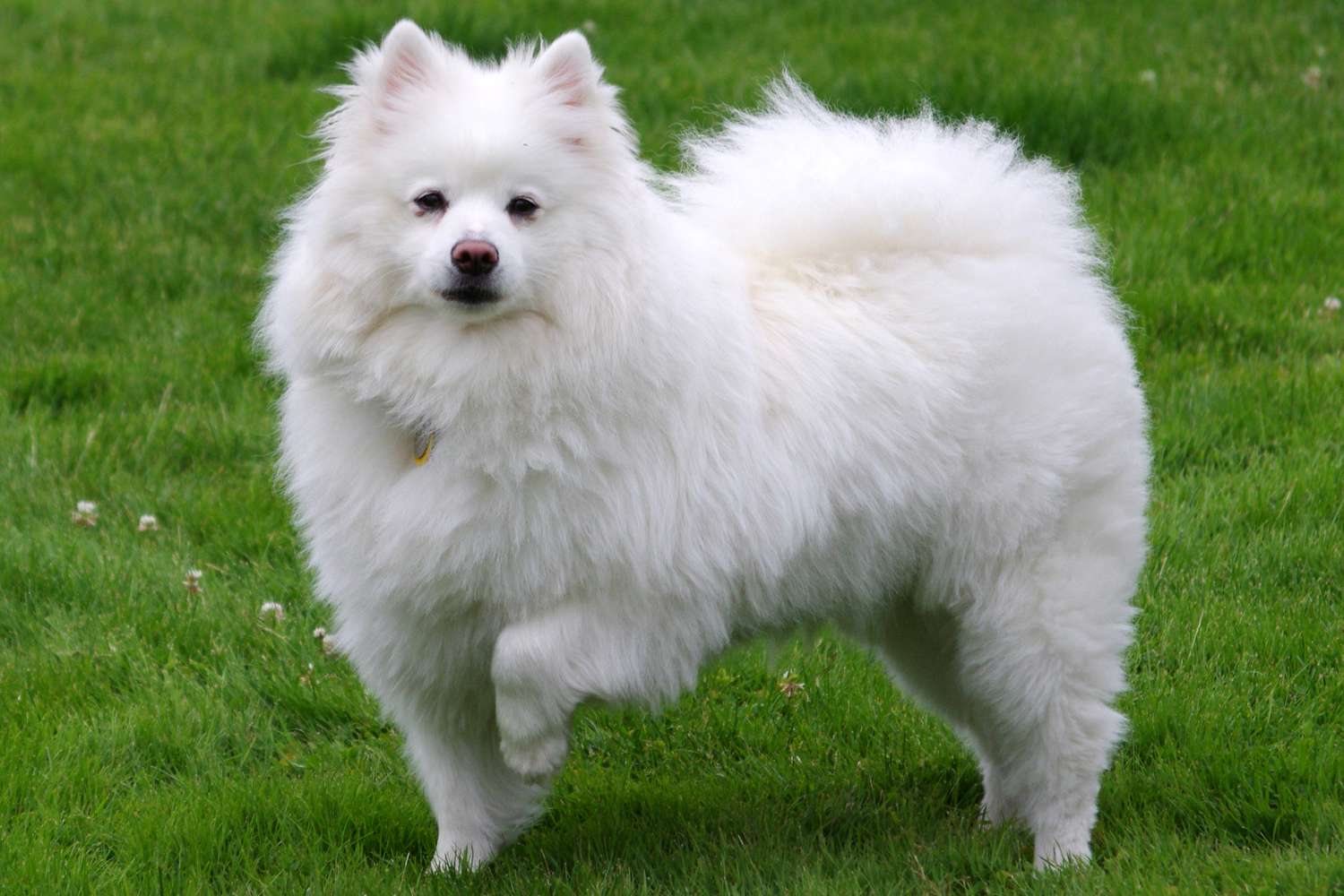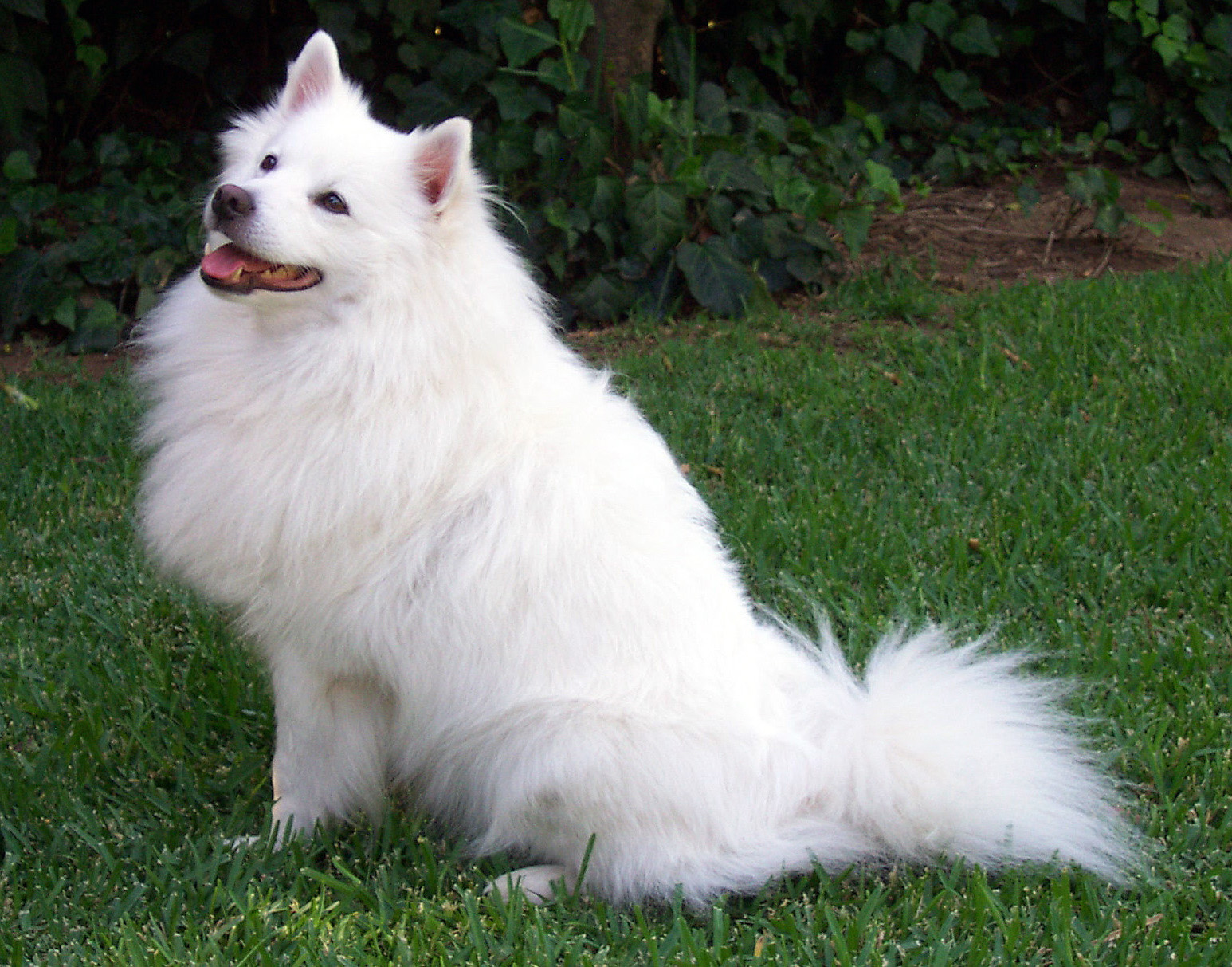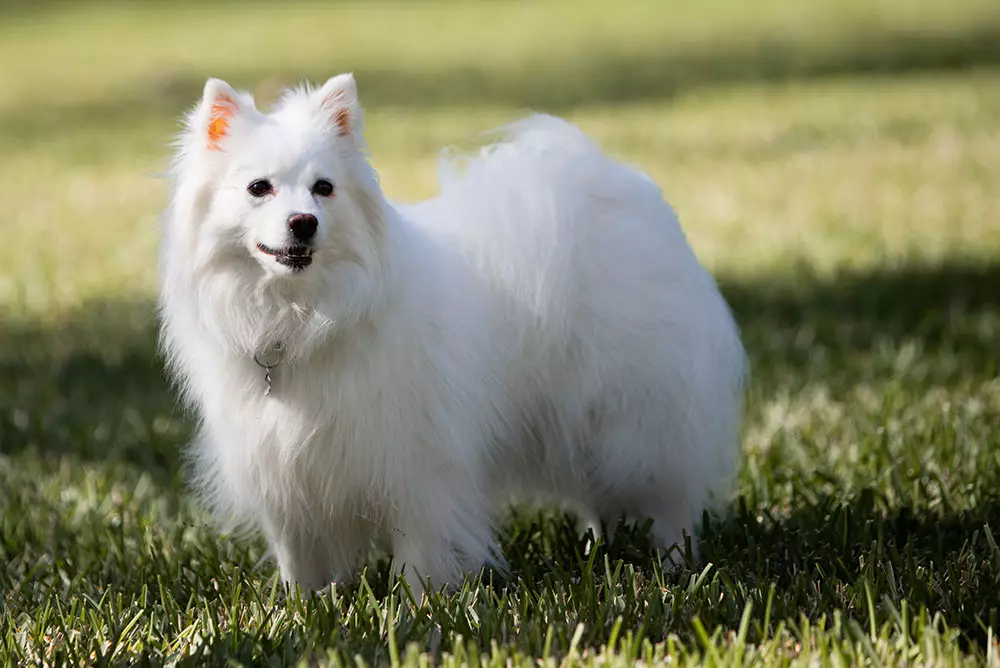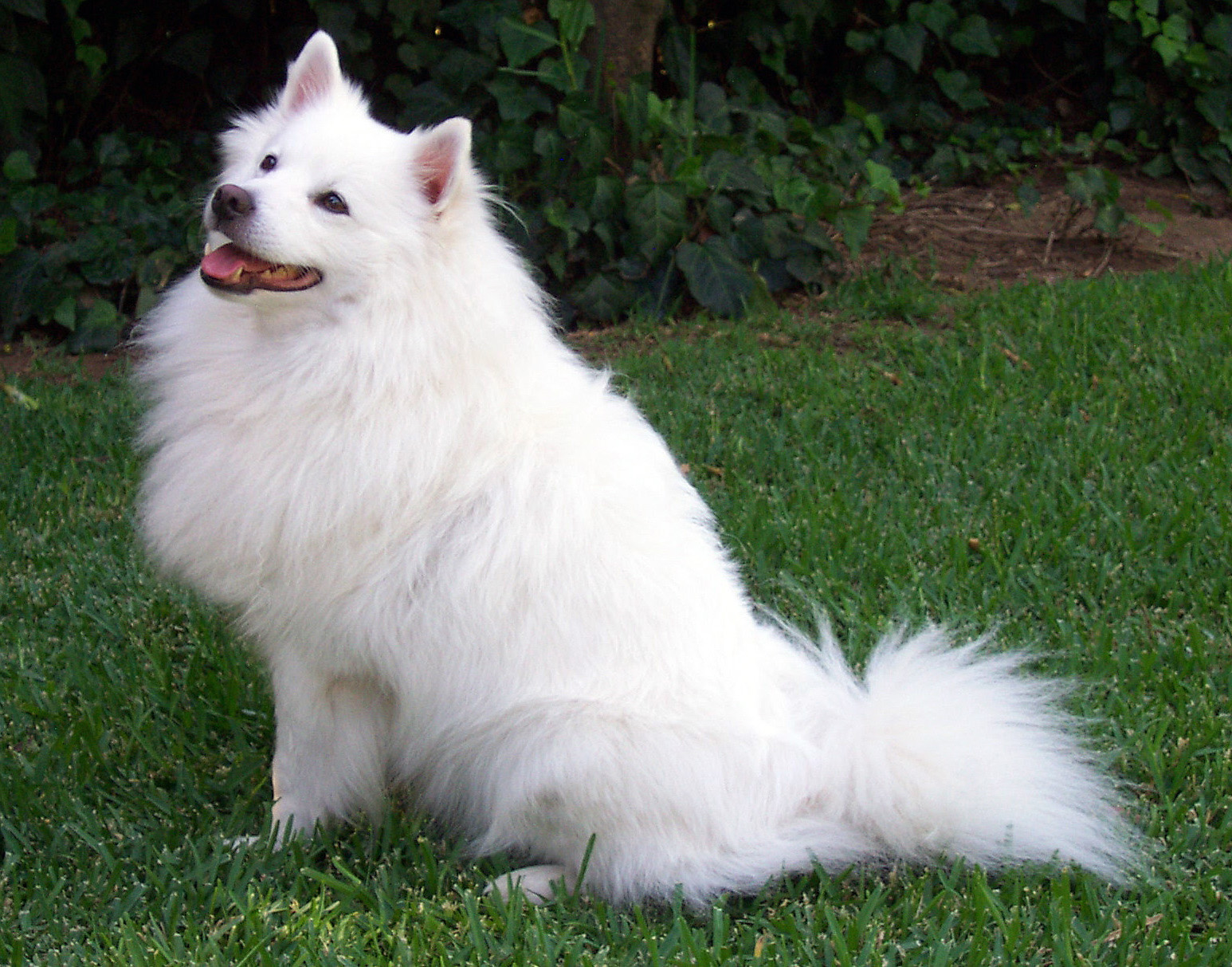Blog
Should Families with Young Children Get an Eskimo Dog
The question of whether families with young children should get an Eskimo dog is one that many potential dog owners ponder deeply. The Canadian Eskimo Dog, with its captivating appearance and storied history, can seem like an ideal addition to a family. However, the reality of pet ownership reveals complexities that may not be apparent at first glance. This article explores these intricacies in detail, examining both the advantages and challenges of bringing an Eskimo dog into a household with young children.
Understanding the Heritage and Temperament of the Eskimo Dog
To make an informed decision about whether to welcome an Eskimo dog into your home, it’s essential to understand the breed’s heritage and inherent temperament.
>>> Buy now: American Eskimo Dog Red Tribal Aloha
The Historical Background
The Canadian Eskimo Dog has roots that stretch back thousands of years, having been developed by Inuit communities in the Arctic regions of Canada. These resilient dogs were bred for their ability to endure harsh conditions and assist humans in critical tasks such as pulling sleds and hunting for food. The very essence of this breed embodies strength, resilience, and an innate desire to work alongside people.
Their purpose has shaped not only their physical attributes but also their behavioral characteristics. Eskimo dogs are known for their intelligence, loyalty, and protective instincts. Unlike many modern breeds that were selectively bred for companionship, Eskimo dogs retain a strong pack mentality and thrive when given tasks to complete.
Temperament Traits
Understanding their temperament is crucial for families with young children. Typically, Eskimo dogs are known for being friendly and sociable with their human families. However, they can exhibit territorial behaviors and a dominant streak, particularly when they perceive a situation as threatening or confusing.
These traits make them excellent guardians but can pose challenges in a family environment. Their protective nature may lead them to act defensively, especially around unfamiliar adults or other dogs. Therefore, it’s vital for families to ensure that any interactions between the dog and their children are supervised and positive.
Social Interaction and Family Dynamics
An Eskimo dog does best in a structured environment where its place in the social hierarchy is clear. For families with young children, educating both the child and the dog on boundaries and mutual respect is imperative. This involves teaching children how to gently interact with the dog and recognizing the dog’s body language, which will help avoid misunderstandings that could lead to negative experiences.
It’s also important to remember that while Eskimo dogs can bond closely with their families, they are not typically the type to curl up on your lap for affection. They have a working background that shapes their behavior, and families should be prepared to engage with their dog in more active, stimulating ways rather than expecting quiet companionship.
The High Energy Demands of an Eskimo Dog
Another significant factor to consider before welcoming an Eskimo dog into your family is their high energy levels. These dogs require ample amounts of physical exercise and mental stimulation each day to remain healthy and happy.
Daily Exercise Requirements
Eskimo dogs are built for endurance. Their ancestors thrived on long days of pulling sleds and participating in hunts, and this legacy translates into a need for daily physical activity. A simple walk around the block won’t suffice; they typically require vigorous activities such as running, hiking, and engaging in games like fetch or tug-of-war.
For busy families juggling work and childcare responsibilities, finding the time to meet an Eskimo dog’s exercise needs can be challenging. Without sufficient exercise, these dogs may develop destructive habits, including chewing furniture, excessive barking, and digging. Such behaviors can create tensions in a household already managing the unpredictability of young children.
Mental Stimulation
Alongside physical exercise, Eskimo dogs possess high intelligence and curiosity. They thrive on engaging activities that stimulate their minds. Puzzle toys, training sessions, and interactive play are excellent ways to provide this mental enrichment. However, ensuring you consistently engage with the dog in these activities adds yet another layer of commitment and effort for family members already busy with the demands of parenting.
Families must also recognize that young children might not fully grasp the need for structured playtime or consistent training practices. As a result, parents will need to take charge in creating a routine that effectively incorporates the dog’s needs while balancing the energetic demands of their children.
Managing Energy Levels with Children
Imagine a typical scenario: an Eskimo dog bounding with exuberance, ready for action, while a toddler stumbles excitedly in their direction. This can lead to interactions that are overwhelming for both parties involved. This dynamic requires vigilant supervision to prevent accidents and misunderstandings.
Families must be prepared for the possibility that young children may inadvertently trigger the dog’s high-energy responses. Teaching both the dog and the child to respect personal space becomes crucial for maintaining harmony within the household. It is beneficial for parents to observe and guide every interaction, ensuring that play remains safe and enjoyable for everyone involved.
Potential Risks to Young Children
While Eskimo dogs generally form strong bonds with their families, potential risks exist, especially concerning young children. Families should assess these risks carefully.
Accidental Injuries
One of the primary concerns when introducing an Eskimo dog into a household with young children is the potential for accidental injuries. Due to their size and strength, an affectionate jump or playful nip can inadvertently lead to serious harm. Young children may not fully understand canine communication and might misinterpret the dog’s actions as friendly when they are actually manifestations of excitement or overstimulation.
Parents must be proactive in supervising interactions, teaching their children about appropriate behavior around dogs, and understanding how to read the dog’s emotions. Ensuring that all play remains gentle and controlled is crucial to avoid any incidents that could damage trust between the dog and child.
Dominance and Territoriality
Eskimo dogs possess a strong sense of territoriality, often manifesting as guarding behaviors. When combined with their protective instincts, this characteristic can pose challenges in a family setting. There may be instances where the dog perceives young children as competitors for attention or resources, resulting in guarding behaviors that can escalate into aggression.
Establishing a solid training foundation early on is essential to mitigate these risks. Families must teach the Eskimo dog to respect the children’s space, allowing them to coexist peacefully without feelings of threat or insecurity.
Predatory Drives
Though Eskimo dogs are not typically aggressive toward humans, their predatory instincts are still present. These dogs were bred to hunt, and as such, their powerful prey drive can lead them to chase smaller animals or even children if they interpret sudden movements as a trigger.
Families must be mindful of this instinct when allowing the dog and child to interact freely. Proper training and socialization are necessary to foster appropriate behaviors, ensuring that the dog understands the difference between play and prey.
The Importance of Socialization and Early Training
Socialization and training are integral to ensuring a harmonious relationship between an Eskimo dog and young children. Fostering positive experiences during formative years significantly impacts a dog’s behavior in adulthood.
The Role of Socialization
From puppyhood, it is essential for Eskimo dogs to experience various environments, people, and other animals. This exposure helps shape their confidence and adaptability, enabling them to better navigate the diverse situations they may encounter in a family setting.
However, facilitating socialization can be challenging for families with young children. Parents must prioritize taking the dog on outings, meeting new people, and interacting with other pets. This level of commitment requires time and effort that may be difficult to balance with the demands of caring for young children.
Establishing Boundaries through Training
Training should begin as early as possible for an Eskimo dog. Basic commands such as sit, stay, and come should be taught consistently, providing clear expectations for behavior. A well-trained dog is less likely to display unwanted behaviors, making interactions with children safer and more enjoyable.
While some families may feel confident training their pets, enlisting the help of a professional trainer who specializes in Eskimo dogs can be invaluable. Their expertise can offer insights and strategies tailored to the breed’s unique characteristics, helping to establish a successful training regime that works well within the family dynamic.
Ongoing Education for Children
Equally important is educating young children on how to interact with the dog appropriately. Teaching them to approach the dog calmly, avoid sudden movements, and respect boundaries fosters a safer atmosphere for both parties. Instilling these lessons early on can cultivate a lasting bond between the child and the dog, transforming potential risks into cherished relationships.
Identifying the Ideal Family for an Eskimo Dog
Given the unique requirements of owning an Eskimo dog, identifying the right family dynamic is essential for a mutually beneficial relationship.
Experience and Knowledge
Families with previous experience handling large, powerful dog breeds are often better suited for Eskimo dogs. An understanding of dog behavior, training methods, and proper care is necessary to address the specific needs of this breed effectively.
For those new to dog ownership, the challenges posed by an Eskimo dog may become overwhelming, leading to frustration for both the pet and the family. Learning about canine behavior and committing to ongoing education can prepare inexperienced owners for the responsibilities ahead.
Active Lifestyles
Eskimo dogs require regular physical exercise and mental engagement. Families that embrace an active lifestyle—whether through hiking, running, or outdoor play—are more likely to provide the enriching experiences these dogs crave. Those who spend significant time outdoors will find joy in sharing adventures with their dog, strengthening their bond.
Conversely, families who prefer a sedentary lifestyle may struggle to meet the Eskimo dog’s needs. Owners who cannot commit to daily exercise might find themselves facing behavioral issues stemming from pent-up energy.
Commitment to Training
Commitment to consistent training and socialization is paramount. Families willing to invest time and energy into developing a structured training program will foster a well-adjusted companion. Engaging the assistance of knowledgeable trainers can prove invaluable, ensuring that the dog learns to behave appropriately within the family unit.
Safety-Conscious Environment
A secure, fenced yard allows for safe play and exploration. Moreover, families with young children must prioritize supervision during all interactions. Emphasizing safety measures minimizes potential risks and creates a nurturing environment for both the dog and children.
Alternatives to Consider
If, after thoughtful consideration, you conclude that an Eskimo dog may not be the best fit for your family, numerous alternative breeds excel in family settings.
Labrador Retrievers
Labrador Retrievers are renowned for their gentle demeanor and friendliness. They make excellent family companions, particularly with young children. Labs are relatively easy to train and possess a natural eagerness to please their owners, making them well-suited for families seeking an approachable dog.
Golden Retrievers
Similar to Labradors, Golden Retrievers are celebrated for their affectionate nature and willingness to engage with children. Their intelligence and responsiveness to training make them an appealing choice for families looking for a loyal companion.
Newfoundlands
Known as gentle giants, Newfoundlands have earned their reputation as loving family pets. Their calm and friendly disposition makes them particularly compatible with children. While they require regular exercise, their temperament is generally patient and tolerant.
In conclusion, the question of whether families with young children should get an Eskimo dog is not one to be taken lightly. The unique characteristics and demanding needs of this breed require a thorough assessment of your family’s lifestyle and commitment to dog ownership.
While Eskimo dogs can provide remarkable companionship filled with loyalty and love, they demand the dedication of an experienced owner who can meet their physical and emotional needs. If you find yourself equipped to handle the challenges associated with this breed, the rewards of having an Eskimo dog can be truly extraordinary.
However, if doubts persist or circumstances limit your ability to provide adequate care, considering alternative breeds that align more closely with your family dynamic may lead to happier outcomes for everyone involved. Your journey into dog ownership should ultimately prioritize the well-being of both your family and the furry friend you choose to welcome into your lives
>>> Read more: Discover the secrets that make the Affenpinscher so special




